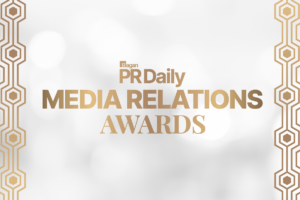One PR agency’s framework for AI use
Considerations for using artificial intelligence from PR industry leaders and AI experts.

Parry Headrick is the founder of Crackle PR, a Massachusetts-based PR firm. Dave Dykes is director of content at Crackle PR.
Artificial intelligence and the technology solutions it powers have, without a doubt, changed the communications industry permanently. The introduction of these technologies to the marketing industry has produced an avalanche of consequences, both objectively good and bad, that leaves many looking for guidance on how to proceed with or without AI.
On one hand, AI has demonstrated the ability to reduce tedium and automate processes for humans that are repetitive, time consuming and do not harness humans’ innate creative or strategic abilities. On the other hand, many fear AI will create further misinformation, larger cultural chasms, and threaten the job security of millions of people. We believe that any outputs produced by AI must always align with Crackle PR’s core values of integrity, transparency, and objective, demonstrable beneficence.
With great power comes great responsibility, so in consultation with leading AI experts like Chris Penn of Trust Insights, we compiled a list of five statements we believe to be true about the use of AI in marketing and communications. These statements aim to provide a framework for how we believe AI should be used to enhance communication in this new digital age, and educate marketers about the ethical and practical considerations for doing so.
- AI can benefit humans and improve their ability to communicate.
- There is no ethical use case for AI that intentionally deceives or otherwise harms human beings, or their understanding of the physical world. The problems that AI will solve are not new, and humans will continue to have human problems. The application of AI to solve these problems by introducing new processes is what will change. Therefore, AI must be used to improve, clarify, and add to human communication and understanding.
- In communications, AI should be used to augment existing processes, not replace them. The results from an AI system should automate or speed repetitive processes that would take a human being longer to execute. AI should be used to reduce burdens on humans, not increase them.
- Marketers need to prepare for AI.
- AI is already being used for business purposes across a litany of industries, and its ability to speed processes and further knowledge is established. Therefore, humans must direct AI to produce value for human purposes, including scaling and elevating human communication.
- In communications, AI will continue to be a tool to increase communication and human understanding, so marketers must familiarize themselves with the technologies responsible. AI may be able to produce content faster than a human, but that content must be synthesized and managed by a human brain in order to ensure that it will be effectively communicated to an intended audience. As part of this endeavor, Crackle aims to educate both clients and our market of best practices for using AI in the communications field.
- AI transparency is critical.
- Although the functions and manifestations of AI-generated content may change, the use of generative AI in content production, as well as other AI-driven solutions, will remain a function of communication for the foreseeable future. Therefore, communicators should err on the side of transparency when using generative AI to develop content, ideas, or other functions of communication.
- In communications, if AI is used, all involved parties should be aware and consenting to its use. This includes disclosing to patrons (i.e., clients) and readers that AI was used in part to aid the production of content they are absorbing. Additionally, AI-generated content should be evaluated and revised by humans before it is deployed to human audiences, if it is to be presented as human-generated. Any outputs from an AI function must align with the values of the humans who produce it.
- Humans should remain skeptical of AI, but not let skepticism halt innovation.
- AI is not intended to do everything, nor should it. Therefore, when evaluating AI solutions, it is critical for humans to consider AI benefits with a healthy dose of skepticism, and continually seek out lurking variables making AI vulnerable to bias. At the same time, addressing bias should not be used as rationale for categorically rejecting solutions that improve human processes based on the fact that it uses AI.
- In communications, before adopting AI-driven technologies, practitioners should evaluate current processes to determine if a given technology is more beneficial than an existing process or solution. Communicators should simultaneously seek out new AI solutions that can help speed and scale existing burdensome processes. In any instance, communicators must be able to cite sources and provide methodologies for the content they produce.
- AI guidance must change as technologies advance.
- Artificial intelligence regulation must change as AI technologies advance and the gap between human and AI communication shortens. As new technology capabilities are made available to humans and produce unforeseen consequences, they will require oversight and intervention from authoritative bodies. Therefore, guidance for using AI technologies must adapt to mitigate harm to humans or misrepresentations of truth.
- In communications, it will fall on communication practitioners to use AI in transparent and ethical ways. What is deemed ‘transparent’ and ‘ethical’ must evolve and be regulated based on input from industry leaders, technology developers, academics, and other experts by evaluating the sociological consequences of AI’s use. AI is just a newer, and more advanced form of technology, so the guidelines for preparation are the same as introducing anything into your tech stack. Evaluate, test, implement and revise.






